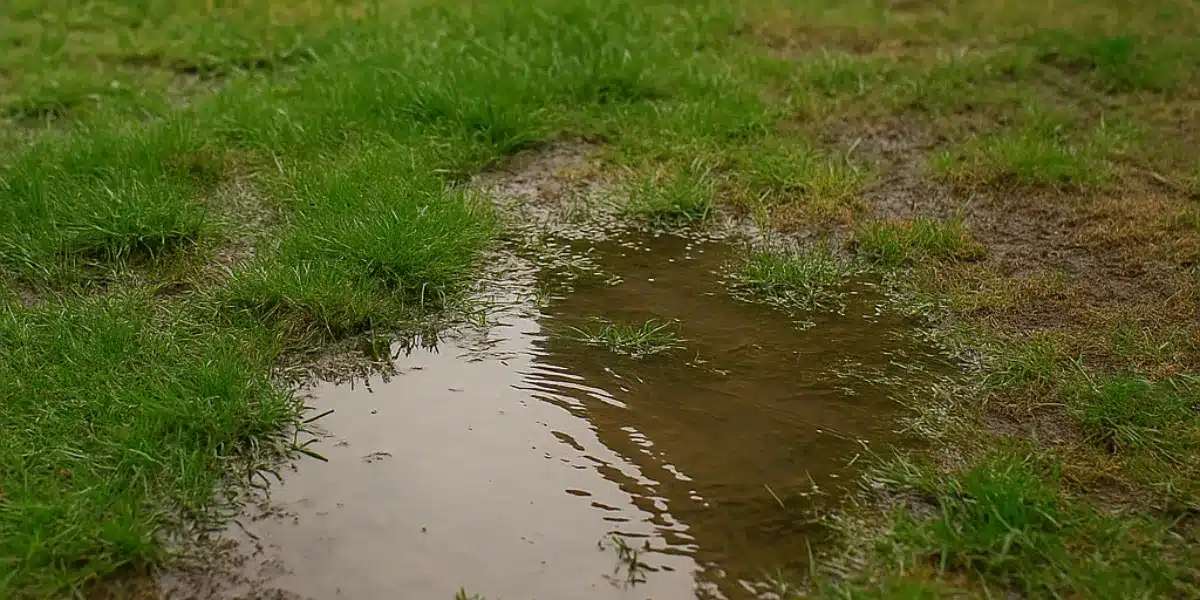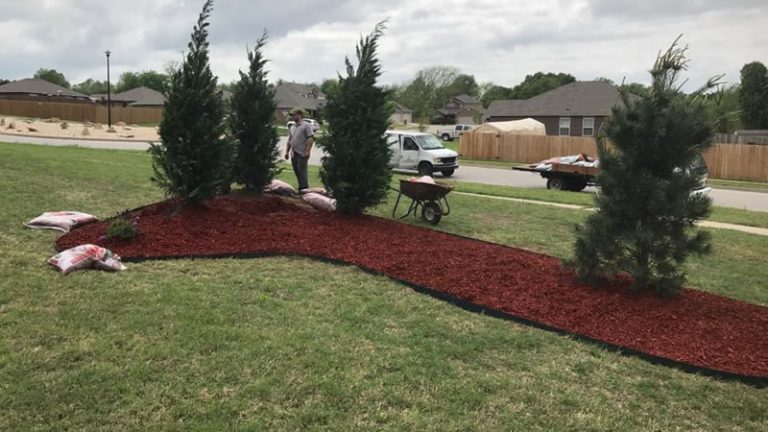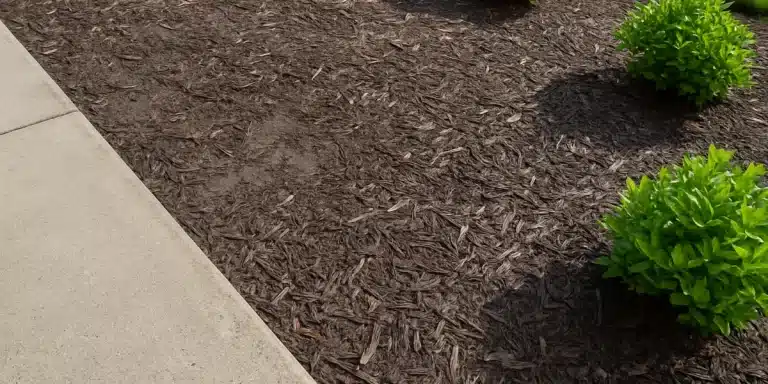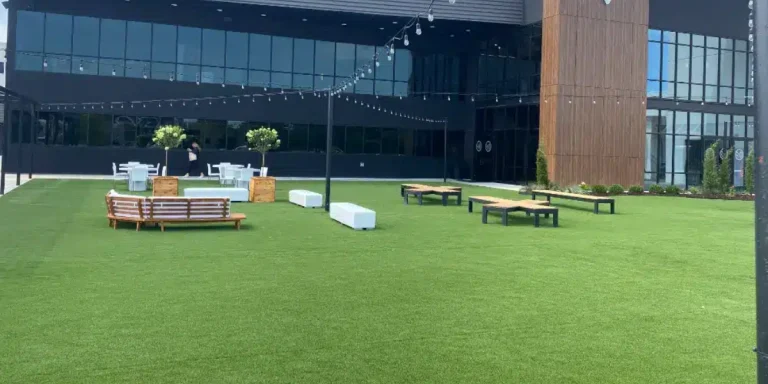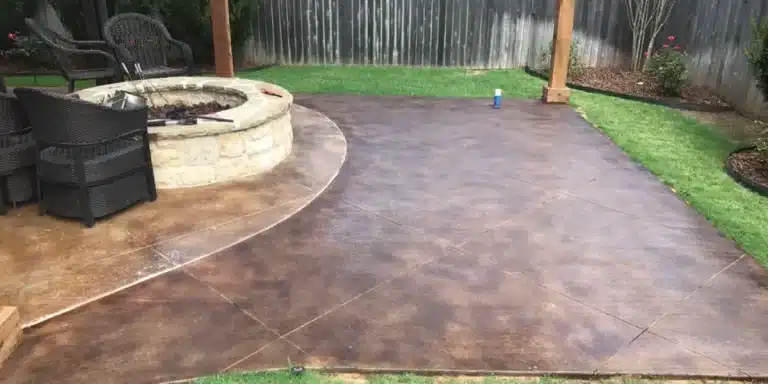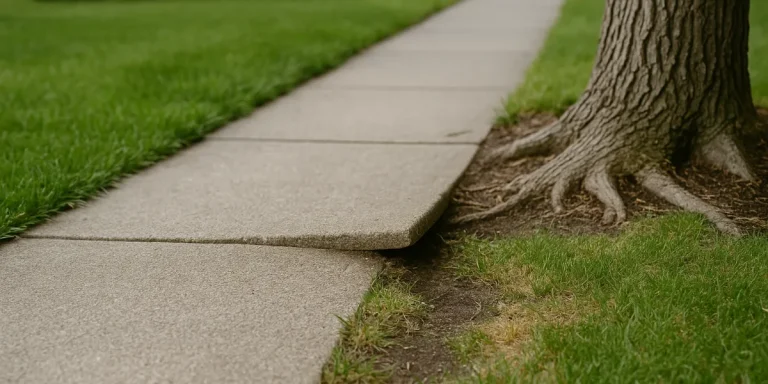Why Your Lawn Has Mushy Spots After Rain
If you’ve ever walked across your lawn after a rainstorm and noticed areas that feel soggy, spongy, or unstable, you’re not alone. Mushy spots in your yard are more than just a nuisance—they’re often signs of underlying drainage issues that can harm your grass, attract pests, and lead to long-term landscape damage.
At Perfection Outdoor Solutions, we help homeowners and commercial property managers across Tulsa and surrounding areas diagnose and correct these issues quickly and professionally.
What causes mushy spots in your lawn?
If your lawn feels soft, soggy, or spongy after rain—or even long after the rain has stopped—it’s likely a sign of poor drainage or water management issues. Mushy areas often indicate that water isn’t soaking into the ground as it should, and instead is pooling on the surface or just below it. Left unresolved, these wet zones can damage your lawn, weaken your soil, and make your yard unpleasant to use.
There’s no one-size-fits-all cause—several factors can contribute, often working together. Here are the most common reasons for soggy lawn conditions, particularly in Tulsa and the surrounding areas:
Compacted soil
One of the leading causes of mushy lawns is soil compaction. When your lawn receives regular foot traffic, vehicle movement (like lawn mowers or utility trailers), or hasn’t been aerated in years, the soil becomes compressed. This compression eliminates the air pockets that water normally uses to move downward through the ground.
-
- Water pools on the surface instead of soaking in
- Root growth is restricted, making grass more vulnerable
- Lawns may stay wet longer, especially after heavy rains
This is particularly problematic in commercial or high-traffic residential areas where turf is regularly walked on or driven over.
Poor grading or drainage slope
If your yard is graded improperly—or not at all—rainwater can flow toward your home or collect in low-lying zones rather than draining away. Common grading issues include:
-
- Flat yards with nowhere for water to go
- Areas that slope toward buildings, patios, or landscape beds
- Settled or sunken spots caused by erosion or previous construction
Without the right slope, water naturally accumulates and saturates those areas, leading to persistent wetness and even foundation problems if near your home or structures.
Thatch buildup
Thatch is a thick layer of dead grass, roots, and organic debris that sits between the soil and the living grass blades. While a small amount is beneficial, excess thatch (over ½ inch thick) creates a sponge-like layer that prevents water from penetrating the soil below.
-
- Water becomes trapped above the soil surface
- Fungal diseases are more likely to develop
- Grass roots grow shallow, weakening turf over time
If your lawn feels spongy even when dry, thatch could be part of the problem.
Inefficient or broken irrigation systems
Your sprinkler system should be helping your lawn—not hurting it. But when sprinkler heads are clogged, broken, or misaligned, or when the system runs too long or too often, you can end up with oversaturated soil.
-
- Leaking heads or valves can flood one zone while under-watering others
- Timer settings may not match seasonal watering needs
- Water pooling in shaded or compacted areas can worsen existing issues
Even a small leak in an irrigation line can create a persistent wet spot, especially in heavy clay soil.
Heavy clay soil (common in Tulsa)
Many properties in the Tulsa area are built on clay-heavy soils, which naturally hold more water than sandy or loamy soils. While clay can be fertile, its dense structure makes drainage more difficult—especially after repeated rainfall.
-
- Water moves slowly and tends to pool on the surface
- Soils can quickly become saturated, leading to standing water
- Combined with compaction or grading issues, clay becomes even harder to manage
For these reasons, even a small drainage issue can turn into a long-term problem if not addressed properly by someone who understands local soil conditions.
These underlying causes often go unnoticed until visible damage starts to show—like dead grass, weed outbreaks, or mosquito infestations. At Perfection Outdoor Solutions, we take the time to evaluate every element of your lawn—from soil and grading to irrigation and vegetation health—to uncover the true source of the problem and deliver long-term solutions.
Why it’s a problem—beyond the inconvenience
A soggy lawn is more than just a nuisance when you’re walking across it or trying to mow—it’s a warning sign that your landscape’s health is compromised. When water consistently lingers on the surface or saturates the soil beneath, it disrupts nearly every system that keeps your yard healthy and functional. Over time, these wet zones can quietly cause damage to your grass, soil structure, and even nearby features like patios, sidewalks, and building foundations.
Here’s how soggy lawn conditions can create lasting problems if left unaddressed:
Grass root rot and fungal diseases
Excess moisture deprives grassroots of the oxygen they need to survive. Waterlogged conditions also promote turf diseases like brown patch, dollar spot, and Pythium blight.
-
- Roots begin to rot, weakening the plant from below
- Grass blades may turn yellow, brown, or die off in large patches
- Fungus can spread quickly if conditions stay moist
These issues are particularly common in shady or low-lying areas where sunlight and air circulation are limited.
Increased weed pressure
A healthy, dense lawn naturally crowds out weeds—but wet, stressed turf creates open spaces where weeds can take hold.
-
- Broadleaf weeds like clover, plantain, and dandelions thrive in soft soil
- Weeds spread faster where grass is thin or dying
- Ongoing moisture also helps weed seeds germinate more easily
What starts as a small patch of weeds can quickly spread if the underlying moisture issue isn’t resolved.
Mosquito and pest attraction
Standing water doesn’t need to be deep to attract unwanted pests. Even small puddles in your lawn provide ideal breeding conditions for insects and moisture-loving pests.
-
- Mosquitoes lay eggs in shallow, still water
- Ants, slugs, gnats, and other insects flourish in damp soil
- Pests may eventually migrate into nearby mulch beds or structures
This is especially concerning for properties near common areas, outdoor seating, or children’s play areas.
Long-term soil and landscape damage
Water that repeatedly pools in the same location wears away at your soil over time and can cause more widespread landscape degradation.
-
- Erosion strips away topsoil, exposing roots and reducing turf quality
- Washed-out mulch loses its insulating properties and visual appeal
- Excess moisture near patios, retaining walls, or home foundations can compromise structural integrity
In commercial settings, these issues can also lead to liability concerns—from slippery sidewalks to damaged public areas.
At Perfection Outdoor Solutions, we understand that drainage problems can’t be ignored—they need to be solved at the source. Our comprehensive approach looks at the health of your lawn, the layout of your property, and the performance of your irrigation system to create tailored solutions that restore stability, improve safety, and protect the long-term value of your landscape.
How we fix mushy lawn problems
Mushy lawns don’t get better with time—they usually get worse. That’s why it’s important to take action before water damage affects your turf, plantings, or even nearby structures. At Perfection Outdoor Solutions, we go beyond surface-level fixes. Our approach is focused on identifying the root cause of your soggy lawn and implementing a targeted, long-term solution that works for your specific property.
We take the time to evaluate the full picture: soil conditions, grading, irrigation habits, and how water flows through your landscape. Whether the issue is limited to one zone or spread across multiple areas, our team brings deep experience and local knowledge to correct the problem effectively.
Our process for solving lawn drainage issues typically includes:
-
- Comprehensive site assessment
We start with a full evaluation of your lawn’s slope, soil composition, drainage patterns, and moisture retention. This allows us to determine exactly where and why water is pooling. - Core aeration
If compacted soil is contributing to the problem, we recommend core aeration to open up the soil and allow water to penetrate more deeply. This also helps improve air circulation and root growth. - Grading and re-sloping
We can reshape the surface of your lawn to encourage water to flow away from problem areas. Proper grading is essential for redirecting runoff from low-lying zones and hard surfaces near the home. - French drain or dry creek bed installation
For properties with chronic saturation, we often install French drains, catch basins, or dry creek beds that collect and redirect water safely away from the lawn and structures. - Sprinkler system adjustments or repairs
Overwatering is a common contributor to soggy spots. We inspect your entire sprinkler system for leaks, clogs, or poor coverage, and make repairs or adjustments to reduce excess moisture. - Thatch removal and lawn restoration
If thick thatch or poor turf health is involved, we’ll remove buildup, treat any underlying fungal issues, and begin a lawn restoration plan that includes overseeding and proper fertilization.
- Comprehensive site assessment
Integrated landscaping solutions
When solving drainage issues, many clients also take the opportunity to enhance or upgrade their yard. We frequently pair drainage solutions with services like:
-
- Mulch installation to stabilize beds and improve moisture control
- Sod replacement in areas where grass has died due to water damage
- Landscape design to create functional, low-maintenance outdoor spaces
- Paver patio construction that includes proper grading and drainage planning
All of these services can be seamlessly integrated into your drainage solution for a complete yard improvement that looks better and performs better.
At Perfection Outdoor Solutions, our goal isn’t just to fix the wet spots—it’s to restore your lawn to full health and give you a usable, attractive outdoor space that lasts. We understand the unique soil, climate, and grading challenges in the Tulsa area, and we bring proven solutions to every project.
When to call a professional
While some homeowners try DIY fixes like aeration or patching low spots with topsoil, persistent mushy areas are best addressed by a professional. Improper grading, inadequate drainage design, or overlooked irrigation issues can make the problem worse if not handled correctly.
If your lawn stays soggy for more than 24–48 hours after rainfall, or you’re noticing increased weed growth and turf damage in specific areas, it’s time to bring in a team that knows Tulsa's soil, climate, and drainage challenges.
Proudly serving Tulsa and surrounding areas
Perfection Outdoor Solutions provides expert lawn drainage and landscape solutions for clients in:
We bring local knowledge and tailored recommendations to ensure your outdoor space performs and looks its best year-round.
Stop tiptoeing around puddles—let us help
Get your lawn back on solid ground
If soggy, uneven, or mushy areas are taking over your yard, Perfection Outdoor Solutions can help you identify the cause and implement a long-term fix. Our drainage and lawn care services are designed for Oklahoma’s climate and backed by years of hands-on experience.
Call us today or request an estimate online. We proudly serve Tulsa and nearby communities with honest service, detailed solutions, and results you can count on.

